When completely altering your bread choices and choosing sourdough bread, this would mean that you would have to stick to natural sourdough starter, and completely eliminate commercial yeast. But have you ever wondered whether you can sneak a few spoonful’s of yeast into your starter? The answer to substituting sourdough starter for yeast is, yes absolutely, and here’s how!
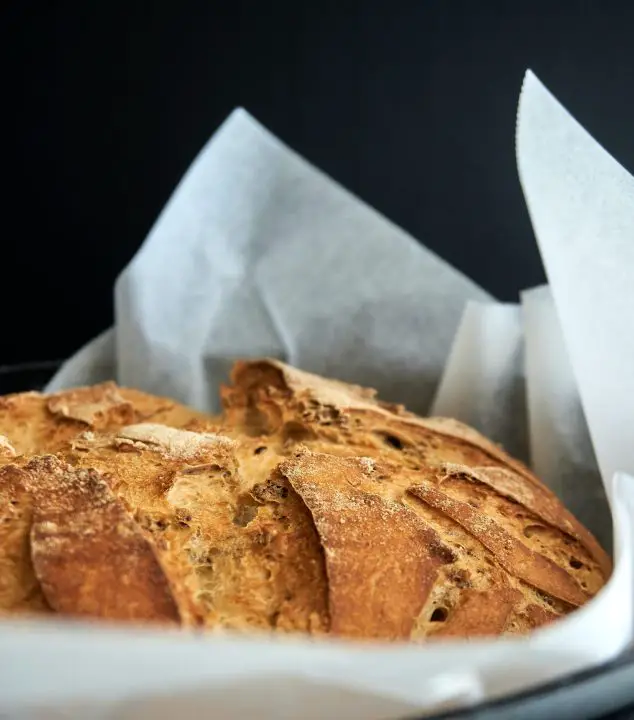
Table of Contents
- Why Substitute Yeast for Sourdough?
- How to Substitute Sourdough Starter for Yeast
- Using Sourdough Starter Instead of Yeast
- How to Convert Any Recipe to Sourdough
- Homemade Bread Converted to Sourdough
- Converting Recipes that Don’t Contain Yeast
- Can You Convert Cakes to Sourdough?
- Substitute Sourdough Starter for Yeast – Things to Consider When Converting
- Sourdough Starter Instead of Yeast – Final Thoughts
- Substitute Sourdough Starter for Yeast FAQs
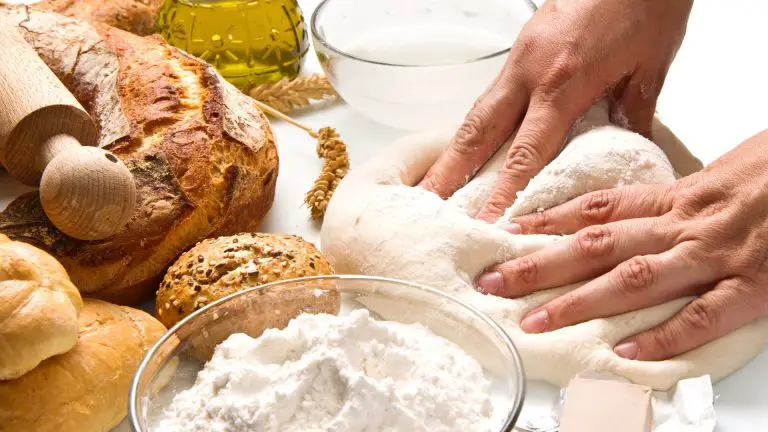
Standard Homemade Yeast Bread Recipe
Let’s take a look at an example of a simple homemade bread recipe that requires yeast, with some changes to make a sourdough version.
- Total Time: 0 hours
- Yield: 1 loaf 1x
Ingredients
- 500 grams of strong white bread flour – use 450 grams for sourdough
- 300ml warm water – use 250ml for sourdough
- 7 gram sachet fast action dried yeast – use 100 grams of sourdough starter in place of yeast
- 1 teaspoon salt
- 1 tablespoon honey
- 2 tablespoons olive oil
Instructions
- Combine all the ingredients together and knead for 10 minutes.
- Leave the dough in the bowl to rise for 2 hours – for sourdough bread, leave it to rise for 4 hours, waiting for it to double in size.
- Once proofed or doubled in size, shape the dough and place it into a greased loaf pan.
- Leave the dough to rise for another hour – for sourdough leave it to rise for at least 2 hours.
- Bake your bread.
- Prep Time: 6 hrs 10 mins
- Category: bread
Why Substitute Yeast for Sourdough?
You’re probably wondering why anyone wouldn’t want to keep their sourdough starter with its fresh yeast and substitute it for the likes of instant yeast.
Well some of us struggle to digest gluten, unless it is in sourdough form. Or maybe you simply prefer to consume wheat in an easier to digest format, as opposed to the commercial yeast version.
Making a sourdough version of some of your favourite yeast recipes will bring forth a whole new world of complex flavours to the mix, turning ordinary recipes into delicious ones.
How to Substitute Sourdough Starter for Yeast
To convert a yeast based recipe to sourdough you should know that:
- 100 grams of sourdough starter is almost equivalent to 5 to 7 grams of instant/dried yeast.
- When conducting a conversion, you must decrease the amount of water or liquid and flour from your recipe that you have included from your starter. This is to ensure that the consistency remains the same.
- The fermentation time should double as opposed to the original recipe.
Using Sourdough Starter Instead of Yeast
When you’re in possession of an active starter it can be used in many forms of baking, especially when you’re feeling a little experimental. To convert yeasted recipes and quick breads to sourdough, the rules may vary.
Yeasted Recipes
Logically, if you’re aware of the hydration level of your sourdough starter, then adapting a yeast bread recipe should be a piece of cake
You should consider the amount of yeast you wish to substitute. With the rising power of one packet of yeast being equivalent to one cup of sourdough starter, depending on how active it is.
Knowing this, you can estimate a substitution of one cup of sourdough starter for one packet of commercial yeast. Then proceed to lower the flour and water according to the hydration levels, ensuring that you measure it again by weight.
Once you have your sourdough mixed together and completed the flour and water adaptations, you must also adjust the rising time for sourdough. Essentially you’ll need a 4 hour rise time instead of the instant yeast rise time which is normally around 2 hours.
Quick Breads
Quick bread recipes are more of a challenge, because most of them were created with the hopes of a quick leavening of baking soda or baking powder in future bakes.
Let’s break this down for better understanding.
Baking soda is used in baking quick breads. It is an alkaline substance that reacts with the acidic elements in a recipe (i.e. buttermilk, or vinegar) to produce gases that create a rise in pancakes or biscuits.
Baking powder contains both acid and alkaline components, which is how you can make pancakes or biscuits with milk non acidic.
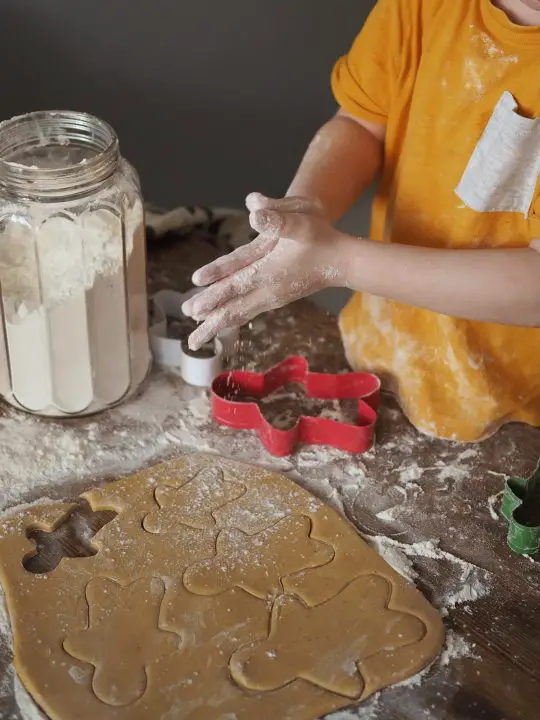
How to Convert Any Recipe to Sourdough
For the following conversions we will aim to extract the entire benefit of sourdough, as well as the sour flavor. There are several factors to consider when converting yeasted recipes to sourdough, and it relies on the type of recipe you wish to convert.
Converting Yeast Based Recipes to Sourdough
Bread recipes that require yeast can be easily converted, once you implement the basic rules before making the conversion. You should consider:
- The amount of yeast in your recipe
- The amount of time required to rise
- The amount of water and flour in your recipe
What is the Sourdough Starter Equivalent to Yeast?
| Sourdough Starter | Instant/Dried Yeast | Fresh Yeast |
| 100 grams | 5 to 7 grams | 12 to 15 grams |
Judging from the table above, you can infer that using 100 grams of sourdough starter would be equivalent to 5 to 7 grams of dried/instant yeast, or 12 to 15 grams of fresh yeast. Most recipes that call for one loaf of bread would require that much yeast.
How Long Should You Leave Sourdough to Rise
Your sourdough recipe should rise at least double the yeast recipe time, and this is vital for the first rise and second rise.
For instance, if your bread recipe calls for a 2 hour bread rising or proofing time with a 1 hour second rise, then you should ensure that your sourdough bread rises for at least 4 hours, with a 2 hour second rise.
Here’s a comparison to help you:
| Rise | Yeast Bread | Sourdough Bread |
| 1st Rise | 2 hours | 4+ hours |
| 2nd Rise | 1 hour | 2+ hours |
Difference in Rising Time
The amount of time you allow your bread to rise will obviously rely on the temperature of the surrounding environment. This is for both yeast bread as well as sourdough.
For instance, a yeast recipe can rise in half an hour, however a sourdough recipe may require a couple of hours.
Adjusting Flour and Water
An essential element to keep in mind when it comes to recipe conversion, is the additional ingredients from your sourdough starter. Dried or fresh yeast doesn’t contribute to texture or consistency, however the sourdough starter will, as it is made up of flour and water.
The adjustments will rely on the hydration level of your starter. If your starter remains at 100% hydration (feeding equal amounts of flour and water) then you’ll have to remove the same amount of liquid and flour from your original recipe due to the excess from your starter.
| 100 grams Sourdough Starter Requires | Recipe Adjustment | |
| Water | 50 grams | Use 50 grams less |
| Flour | 50 grams | Use 50 grams less |
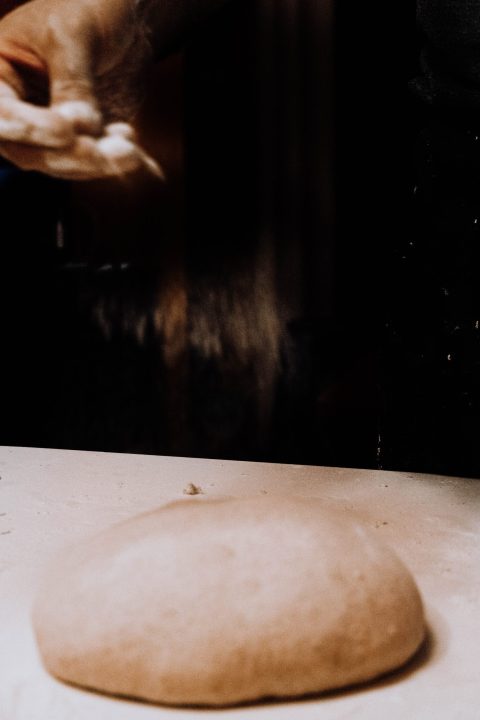
Homemade Bread Converted to Sourdough
Let’s take a look at an example of a simple homemade bread recipe that requires yeast, with some changes to make a sourdough version.
Standard Homemade Yeast Bread Recipe
Let’s take a look at the actual ingredients for yeast bread followed by the substitutions needed to create this sourdough recipe.
Ingredients
- 500 grams of strong white bread flour – use 450 grams for sourdough
- 300ml warm water – use 250ml for sourdough
- 7 gram sachet fast action dried yeast – use 100 grams of sourdough starter in place of yeast
- 1 teaspoon salt
- 1 tablespoon honey
- 2 tablespoons olive oil
Instructions
- Combine all the ingredients together and knead for 10 minutes.
- Leave the dough in the bowl to rise for 2 hours – for sourdough bread, leave it to rise for 4 hours, waiting for it to double in size.
- Once proofed or doubled in size, shape the dough and place it into a greased loaf pan.
- Leave the dough to rise for another hour – for sourdough leave it to rise for at least 2 hours.
- Bake your bread.
Converting Recipes that Don’t Contain Yeast
Fortunately there are other varieties of recipes that can be converted to sourdough. Here are a common few:
Converting Quick Bread Recipe
These are quite often converted into sourdough versions, bringing forth extra flavor and fluffiness. However, these recipes do not require yeast, instead they make use of baking soda or baking powder to initiate a rise.
There are 3 easy steps to follow for any quick bread recipe:
- Replace parts of flour and water with sourdough starter
- Add baking powder or baking soda at the final step before baking
- Leave the dough to ferment for 4 hours minimum
Adding baking powder or baking soda right at the end, will ensure that you achieve the maximum rise when baking quick breads.
Can You Convert Cakes to Sourdough?
Since there’s so much sugar in cakes, sourdough starter doesn’t work well when it comes to fermenting flour in a cake mixture. On the other hand, its a great way to add exciting, unique flavors to your cakes, and a great way to make use of any sourdough discard you may have.
Add some sourdough starter into your cake mixture, and you’ll taste the difference when you’ve baked your cake.
Substitute Sourdough Starter for Yeast – Things to Consider When Converting
When planning to convert recipes to sourdough, here are some things to consider:
How Much Sugar Does the Recipe Contain?
Sourdough isn’t great when there is an excess amount of sugar present in the recipe. You should refrain from using more than 10% of sugar in your sourdough bake. Using more than 10% will prevent the wild bacteria and yeast from fermenting the wheat and instead ferment too rapidly, jeopardizing the texture and structure of your bread recipe.
If the recipe you wish to convert involves more than 10% of sugar like cakes for example, you can add sourdough starter into the mix for extra flavor, but not for the hopeful benefits of slow fermentation. Though the conversion method is an excellent way to make use of sourdough discard.
Do Not De-Gas Sourdough
Many breads recipes that use commercial yeast, instruct bakers to knock or de gas the dough. This should be avoided for a dough that has risen through slow fermentation. Sourdough is much too delicate to be knocked about or de-gassed, and should be handled gently.
So make sure you skip this step!
Sourdough Starter Instead of Yeast – Final Thoughts
Substituting sourdough starter for commercial yeast is a great way to make use of any leftover sourdough starter, especially if you’re looking to make some use of that incredibly unique sour flavor.
Substitute Sourdough Starter for Yeast FAQs
Is Sourdough Starter the Same as Yeast?
There isn’t much difference between natural yeast and sourdough starter. Where sourdough starter is made of naturally occurring yeast and lactic acid bacteria, these naturally occurring yeasts are what leavens the sourdough bread.
How Much Starter Equals a Yeast Packet?
100 grams of sourdough starter is equivalent to 5 to 7 grams of instant or dried yeast.
Can You Use Sourdough Starter for Other Breads?
You can use sourdough starter to make crumpets, crackers, pancakes, sourdough pizza, pancakes, scones, hot cross buns and more.
What Can I Substitute for Sourdough Starter?
You can substitute kombucha for sourdough starter, since it also contains yeast bacteria, it can be utilised to start a sourdough starter or ferment your grains.

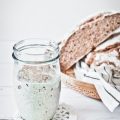
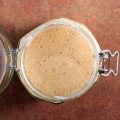
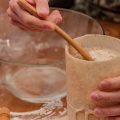
![7 Oldest Sourdough Starter In The World [Believe It Or Not!] 72 7 oldest sourdough starter in the world [believe it or not! ]](https://www.mydailysourdoughbread.com/wp-content/uploads/2023/01/blog-images-21-2-120x120.jpg)
![Sourdough Starter Temperature [Beginner'S Guide] 73 Sourdough starter temperature [a beginner’s guide]](https://www.mydailysourdoughbread.com/wp-content/uploads/2023/01/blog-images-48-120x120.jpg)

Very informative post Thank you for this invested labor